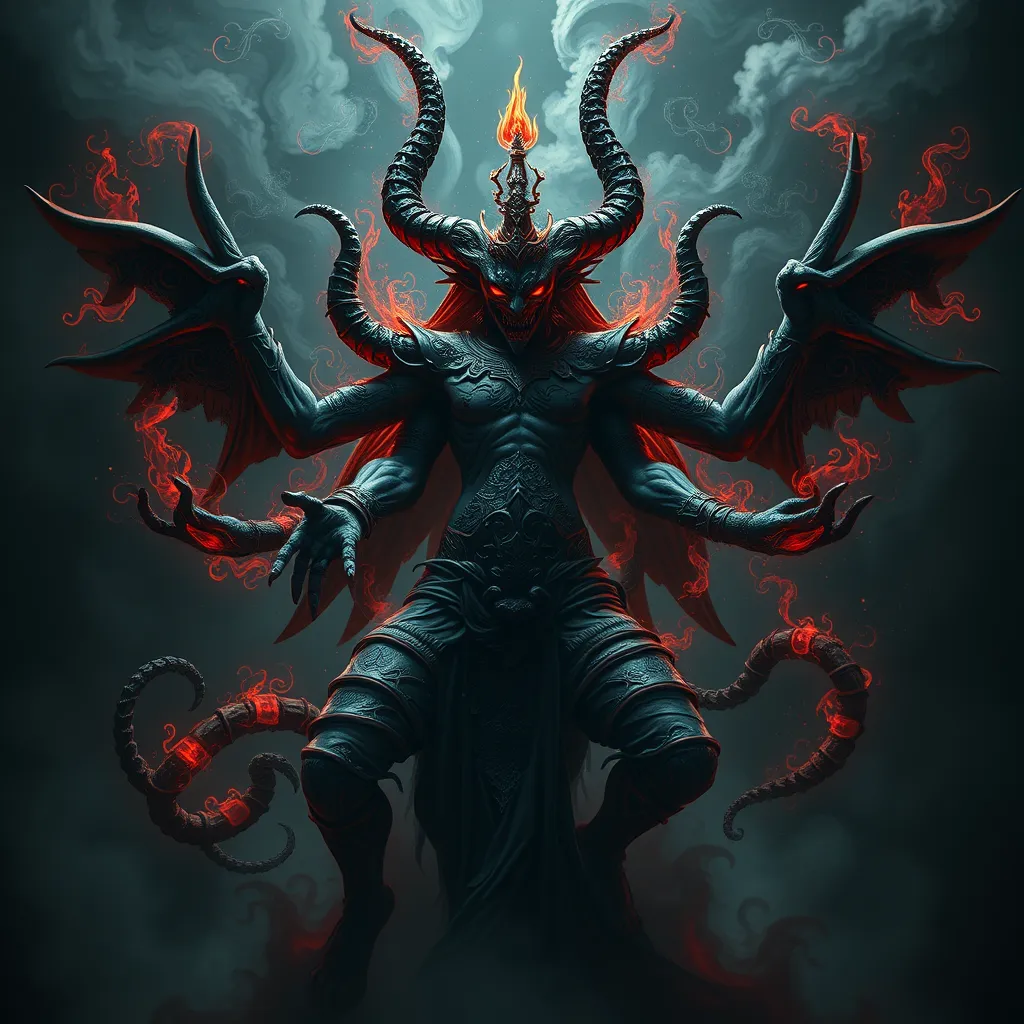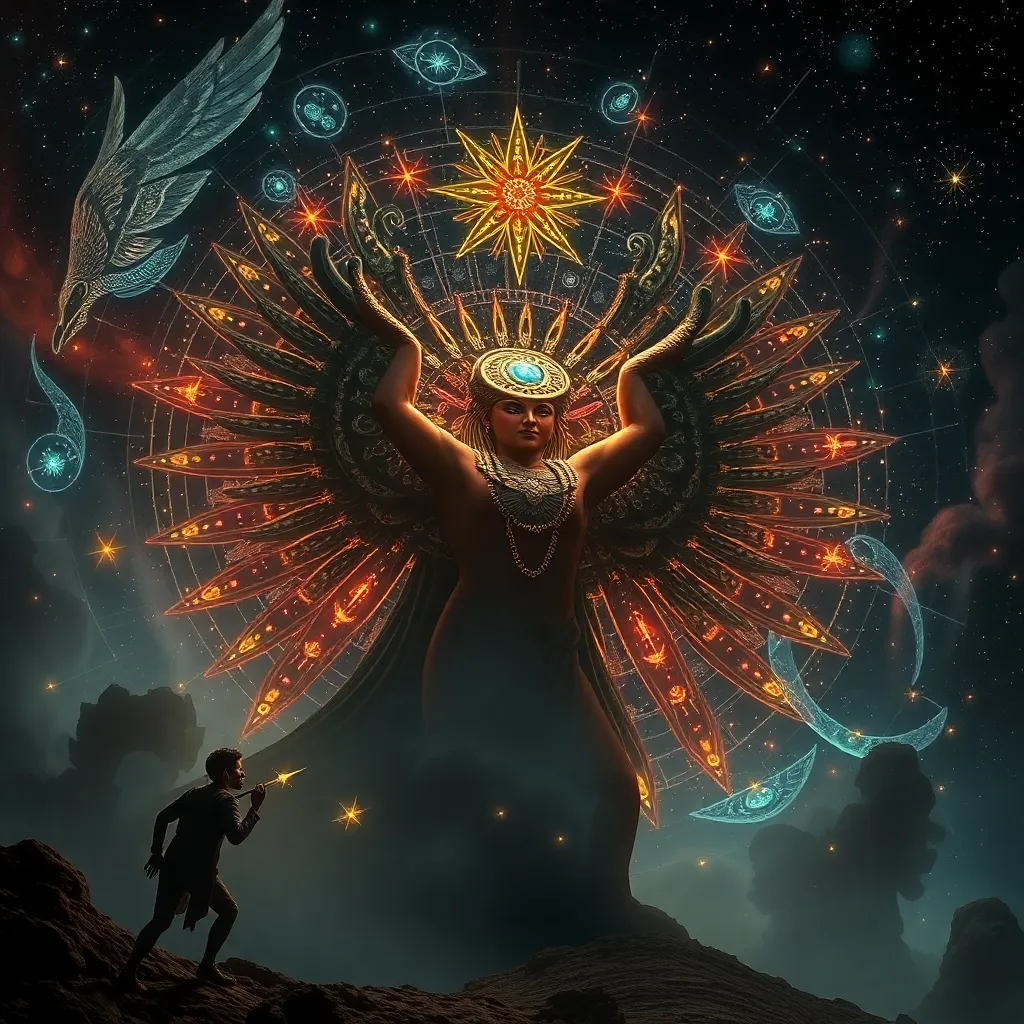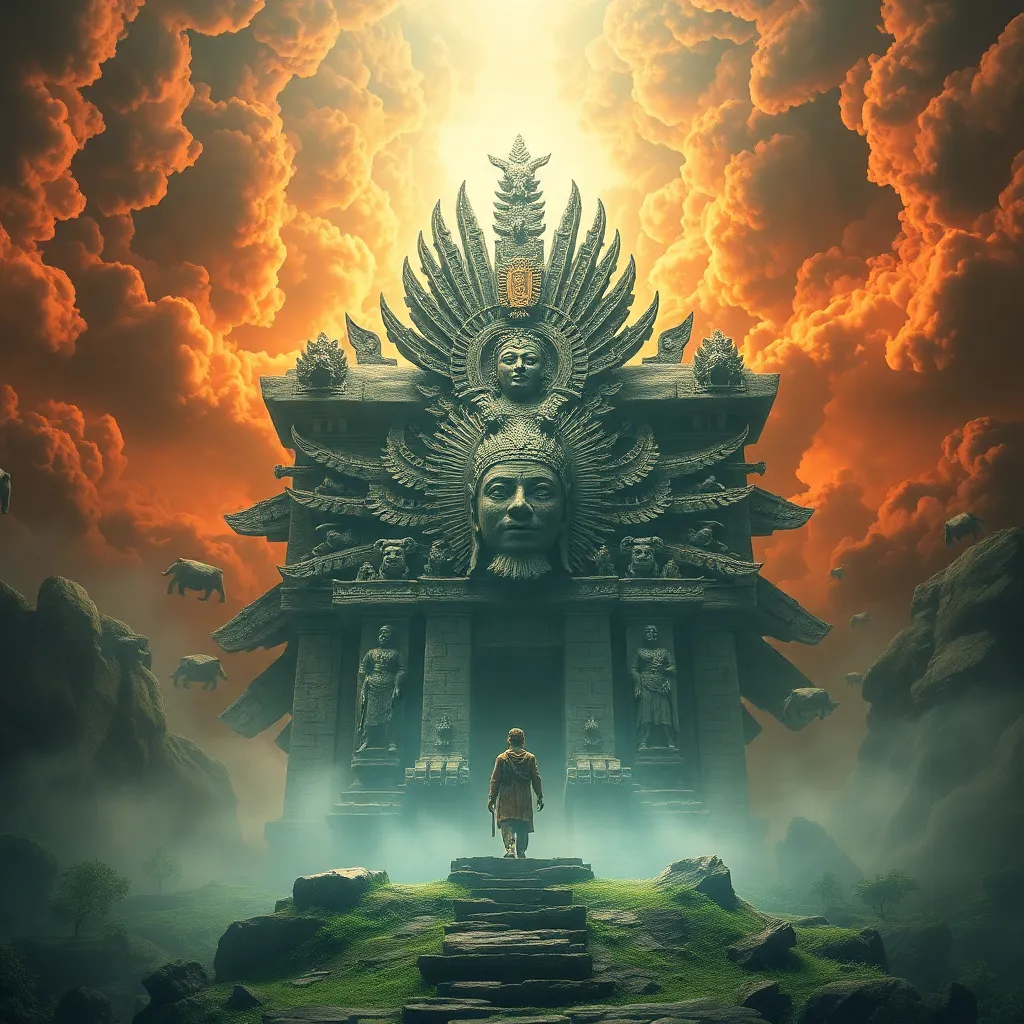The Rakshasa in the Tantric Tradition: The Demonic Entities of the Goddesses
I. Introduction to Rakshasa in Hindu Mythology
The term ‘Rakshasa’ refers to a class of supernatural beings found in Hindu mythology. These entities, often depicted as malevolent spirits, are characterized by their ability to shape-shift and wield significant power. The origin of Rakshasa can be traced back to the ancient texts of Hinduism, where they are described as beings created from the earth and often associated with darkness and chaos.
In Hindu cosmology, Rakshasas play a dual role. They can be seen as both antagonistic forces that challenge divine order and as necessary elements in the cosmic balance of good and evil. Their presence in various myths and legends often serves to highlight the struggles between righteousness and malevolence.
Within the context of Tantric practices, Rakshasas hold a unique significance. They are not merely evil beings but are often invoked in rituals to understand and harness the darker aspects of the human psyche. This understanding allows practitioners to confront their fears and desires, leading to spiritual growth and enlightenment.
II. The Tantric Tradition: An Overview
Tantra is a complex and multifaceted tradition within Hinduism that emerged around the 5th to 9th centuries CE. It encompasses a wide range of practices, philosophies, and rituals aimed at spiritual liberation. The historical context of Tantra reveals a rich tapestry of spiritual exploration that integrates various elements of Hindu thought, including devotion, meditation, and ritual.
Key texts in the Tantric tradition include the Tantras themselves, such as the Kularnava Tantra and the Rudra Yamala Tantra. These scriptures outline the principles of Tantric practice, including the worship of deities, meditation techniques, and the significance of rituals involving divine and demonic entities.
The interplay between the divine and demonic in Tantric rituals is crucial. Tantric practitioners often seek to transcend dualities, recognizing that both aspects are part of the same cosmic reality. This perspective allows for a more nuanced understanding of Rakshasas, who can be viewed as both challenges to be overcome and allies in the quest for spiritual enlightenment.
III. Characteristics and Symbolism of Rakshasa
Rakshasas are typically described as fearsome beings with monstrous features. They may possess sharp claws, fangs, and a terrifying appearance. Psychologically, they embody traits such as deception, cunning, and a deep-rooted connection to primal instincts.
In Tantric lore, Rakshasas symbolize the darker aspects of the human experience. They represent the fears and desires that can lead one astray but also serve as reminders of the power of transformation and healing. The symbolic meanings attributed to Rakshasas include:
- Chaos: They embody the chaos that exists within and around us.
- Temptation: They tempt individuals to stray from their spiritual path.
- Transformation: They represent the potential for personal transformation when confronted.
Interestingly, Rakshasas can be viewed as both protectors and tormentors. In some narratives, they are depicted as guardians of sacred knowledge, while in others, they act as obstacles to spiritual progress. This duality underscores the complexity of their role in Tantric practices.
IV. The Role of Goddesses in Tantric Practices
Goddesses hold a central position in the Tantric tradition, often representing powerful forces of creation, destruction, and transformation. Significant goddesses such as Kali, Durga, and Tara embody the fierce and nurturing aspects of divinity.
The relationship between these goddesses and Rakshasas is intricate. Many myths depict goddesses confronting and subduing Rakshasas, thereby asserting their power over chaos and darkness. This dynamic illustrates how goddesses can harness the energy of demonic entities to protect the cosmos and aid practitioners in their spiritual journeys.
Through their fierce forms, goddesses symbolize the potential for overcoming inner demons. They embody the power to confront and transform fear, anger, and ignorance, illustrating that the path to enlightenment often involves engaging with the darker aspects of existence.
V. Rituals Involving Rakshasa in Tantric Practices
Tantric rituals involving Rakshasas are designed to invoke, appease, or transform these entities. These rituals often focus on understanding the nature of fear and desire, allowing practitioners to confront their inner demons.
Key components of these rituals include:
- Mantras: Sacred sounds or phrases that are recited to invoke specific energies.
- Visualization: Practitioners visualize the Rakshasa to confront their fears directly.
- Offerings: Ritual offerings may be made to honor and appease the Rakshasa.
Case studies of specific Tantric rituals highlight the diverse approaches to engaging with Rakshasas. For instance, a ritual dedicated to Kali may involve invoking her fierce form to defeat a Rakshasa, symbolizing the triumph of good over evil.
VI. Rakshasa in Tantric Cosmology and Mythology
Rakshasas appear in numerous myths and stories, often as adversaries to the gods and goddesses. These narratives illustrate their role in the cosmic balance of good and evil. For example, the story of Ravana, a prominent Rakshasa, showcases the complexities of these beings. While he is portrayed as a villain, his devotion to Shiva adds layers to his character, suggesting that even demonic figures can have redeeming qualities.
The transformation of Rakshasas in various narratives often reflects the evolving understanding of good and evil in Hindu thought. They serve as reminders of the potential for redemption and the importance of inner work in spiritual practice.
VII. Contemporary Interpretations of Rakshasa in Tantric Tradition
In modern times, the understanding of Rakshasas has evolved, with many contemporary practitioners embracing them as symbols of personal challenges and inner growth. Modern-day rituals may incorporate elements of psychological healing, where Rakshasas represent the shadows within us that need to be acknowledged and integrated.
The influence of Rakshasas extends into popular culture and spirituality, where they are often portrayed in literature, film, and art. This representation can sometimes simplify their complex nature, reducing them to mere villains rather than acknowledging their role in spiritual evolution.
Scholarly debates regarding Rakshasas continue, with discussions focusing on their place in Hindu mythology, symbolism, and the implications for understanding human psychology and spirituality.
VIII. Conclusion: The Significance of Rakshasa in the Tantric Tradition
In summary, Rakshasas hold a significant place in the Tantric tradition, embodying the complexities of good and evil, fear and transformation. Their role in Tantric practices highlights the importance of engaging with all aspects of existence to achieve spiritual enlightenment.
The enduring legacy of Rakshasas in spiritual practices serves as a reminder of the necessity of confronting one’s inner demons. As practitioners continue to explore these themes, the future directions for research and understanding in this field promise to deepen our appreciation for the intricate balance between light and darkness in the spiritual journey.



